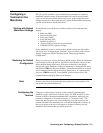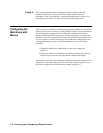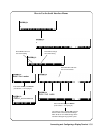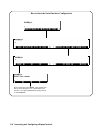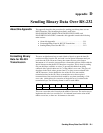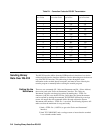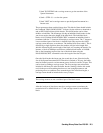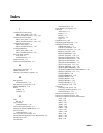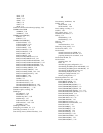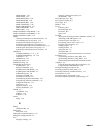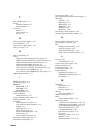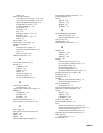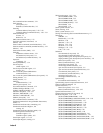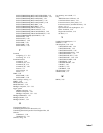DIAG:PEEK?, 7-24
DIAG:POKE, 7-25
DIAG:RDIS:ADD?, 7-25
DIAG:RDIS:CRE, 7-26
DIAG:RDIS:CRE?, 7-26
DIAG:UPL:SADD?, 7-28
DIAG:UPL[:MADD]?, 7-27
DRIV:LIST:ROM?, 7-18
DRIV:LIST?, 7-18
DIAGnostic:DRIVer:LIST:RAM?, 7-18
DIAGnostic:DRIVer:LIST:ROM?, 7-18
DIAGnostic:DRIVer:LIST?, 7-18
Display
instrument information (terminal interface), 3-5
control/editing keys (front panel), 2-10
instrument information (front panel), 2-3
instrument logical addresses (front panel), 2-3
instrument logical addresses (terminal interface), 3-5
module type & description (front panel), 2-5
module type & description (term. interface), 3-8
DOWNload
:CHECked:SADDress, 7-11 - 7-12
:CHECked[:MADDress], 7-9 - 7-10
:SADDress, 7-14
[:MADDress], 7-13
Download program, 5-4
DOWNload, using, 4-9
Downloading device drivers
checking status, 5-9
hardware handshake, 5-12
in GPIB systems with BASIC, 5-8
in GPIB systems with IBASIC, 5-7
in MS-DOS systems, 5-6
manually over GPIB, 5-11
manually over RS-232, 5-11
manually using hardware handshake, 5-13
manually using software handshake, 5-14
multiple device drivers, 5-9
pacing data, 5-12
preparing memory, 5-10
software handshake, 5-12
DRAM, 5-3
:AVAilable?, 7-15
:CREate, 7-16
:CREate?, 7-16
Drivers
listing, 7-18
E
Editing
VXIDLD.CFG, 5-4
Editing keys
front panel, 2-10
Editing keys (terminal interface), 3-14
Editing:the configuration file, 5-4
Error
messages, reading, 3-12
messages, reading (front panel), 2-8
SYST:ERR?, 7-49
Error Messages, B-1 - B-6
Error Queue ,reading, B-1
Error Types, B-2
ERRor?, 7-49
Errors
Command, B-2
Device-Specific, B-2
Execution, B-2
Query, B-2
Example
Storing and retrieving data from mainframe memory, 4-7
Allocating an NRAM segment, 4-8
Continuous pacer out signal, 4-2
interrupting when an error occurs, 6-11
Pacing an external scanner, 4-2
reading the date, 1-5
reading the time, 1-5
setting the date, 1-5
setting the time, 1-5
Synchronizing an internal instrument to an external
instrument, 4-4
synchronizing computers using *OPC, 6-13
synchronizing computers using *OPC?, 6-12
Synchronizing internal/external instruments and the
computer, 4-4
Using the Operation Status Group Registers, 6-9
Using UPLoad and DOWNload, 4-10
Example: Reading Error Queue, B-1
Executing commands (front panel), 2-9
Executing commands (terminal interface), 3-13
Execution Errors, B-2
External computer, interrupting, 6-10
External computer/instruments, synchronizing, 6-12
Index-3



